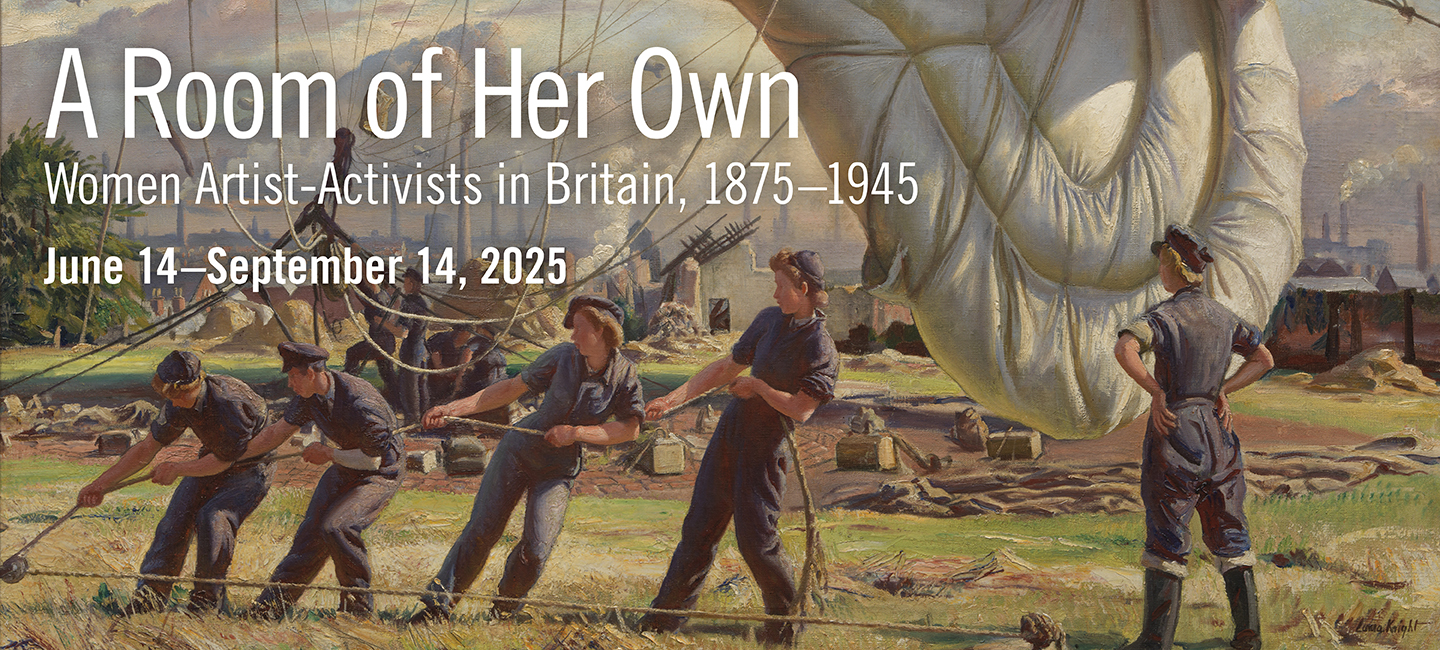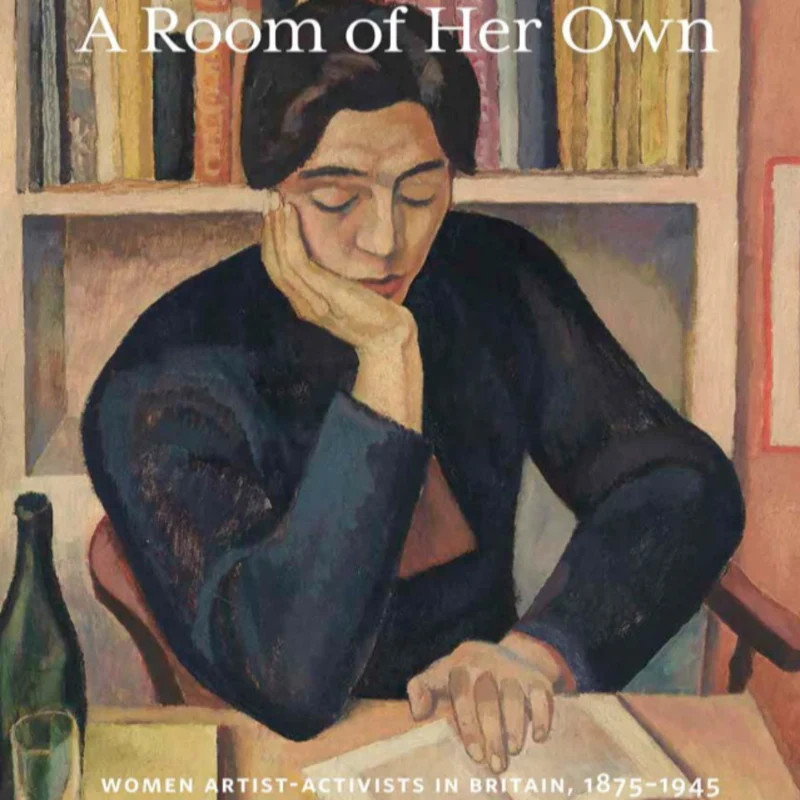Wartime Activism
 Anna Airy, Shop for Machining 15-Inch Shells: Singer Manufacturing Company, Clydebank, Glasgow, Scotland, 1918, oil on canvas. IWM (Imperial War Museums), Art.IWM ART 2271
Anna Airy, Shop for Machining 15-Inch Shells: Singer Manufacturing Company, Clydebank, Glasgow, Scotland, 1918, oil on canvas. IWM (Imperial War Museums), Art.IWM ART 2271Many women took paid employment during the World Wars to help various war efforts at home, while others volunteered. During World War I about two million British women filled vacancies left by enlisted men. The Military Service Act of 1916, which allowed for the conscription of soldiers, accelerated the rate at which women entered the workplace.
At wartime, many of the artists in this exhibition set aside professional aspirations to serve in unrelated industries. During World War I, Ethel Sands first worked as a foreperson in a London clothing factory that produced overalls before training and volunteering as a nurse. Nan Hudson also volunteered as a nurse throughout that conflict, while Winifred Nicholson made plaster cast prosthetics for soldiers and Mary Lowndes organized the Women Welders’ Union, a trade organization that promoted the rights of women working in munitions factories. Some artists leveraged their professional skills in war efforts. During World War II, Gwen Raverat found paid employment with the Admiralty, drawing accurate maps of coastlines for the Navy.
Women artists were also commissioned to record scenes of war activities on the home front. Anna Airy completed five large paintings featuring munitions work in Great Britain for the newly formed Imperial War Museum, including Shop for Machining 15-Inch Shells, Singer Manufacturing Company, Clydebank, Glasgow, Scotland, and An Aircraft Assembly Shop, Hendon. Lucy Kemp-Welch memorialized the work of the Women’s Land Army Agricultural Section in The Ladies’ Army Remount Depôt, Russley Park, Wiltshire, 1918. The War Artists’ Advisory Committee acquired seventeen canvases by Dame Laura Knight showing home front efforts during World War II: A Balloon Site, Coventry and Take Off feature members of the Women’s Auxiliary Air Force and the Royal Air Force, respectively.

